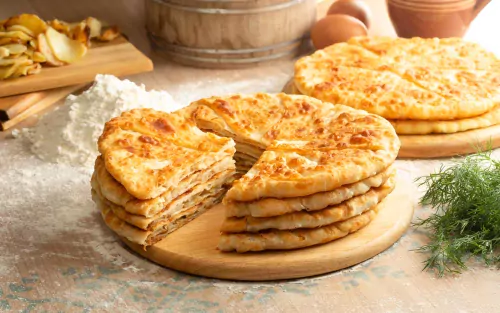
Moldovan cuisine is a blend of Eastern European and Balkan influences, making it a unique and flavorful cuisine. Traditional Moldovan food is hearty, comforting, and delicious, with a focus on seasonal and locally sourced ingredients.
In this blog post, we'll explore some of the most popular traditional Moldovan dishes and share some authentic recipes for you to try at home.
Mămăliga
Mămăliga is a staple of Moldovan cuisine and is similar to polenta. Made from yellow cornmeal, it is usually served as a side dish with meat, cheese, or vegetables. It has a slightly grainy texture and can be shaped into a ball or served in slices.
Ingredients:
- 2 cups yellow cornmeal
- 6 cups water
- 1 teaspoon salt
Instructions:
-
In a large pot, bring the water to a boil.
-
Add salt to the water.
-
Slowly pour in the cornmeal while stirring constantly to prevent lumps from forming.
-
Reduce heat to low and cook for about 20-25 minutes, stirring occasionally.
-
Serve hot with your choice of toppings.
Plăcintă
Plăcintă is a traditional Moldovan pastry that can be sweet or savory. It is usually filled with cheese, potatoes, cabbage, or meat, depending on the region. This recipe is for a savory version of plăcintă filled with cheese and herbs.
Ingredients:
- 3 cups all-purpose flour
- 1 cup warm water
- 1 teaspoon salt
- 1 cup feta cheese, crumbled
- 1/2 cup ricotta cheese
- 1/4 cup chopped fresh dill
- 1/4 cup chopped fresh parsley
- 1/4 cup chopped green onions
- 1/4 teaspoon black pepper
- 1/4 cup vegetable oil
Instructions:
-
In a large mixing bowl, combine the flour, salt, and warm water. Mix until the dough comes together.
-
Knead the dough for a few minutes until it becomes smooth and elastic.
-
Cover the dough with a damp cloth and let it rest for 30 minutes.
-
In a separate bowl, mix together the feta cheese, ricotta cheese, dill, parsley, green onions, and black pepper.
-
Preheat the oven to 350°F.
-
Roll out the dough on a floured surface into a thin sheet.
-
Cut the dough into circles with a cookie cutter or a glass.
-
Place a tablespoon of the cheese mixture in the center of each circle.
-
Fold the edges of the dough over the filling to form a half-moon shape.
-
Brush each plăcintă with vegetable oil.
-
Bake the plăcintă in the oven for 25-30 minutes or until golden brown.
-
Sarmale
Sarmale are stuffed cabbage rolls that are popular throughout Eastern Europe, including Moldova. They are usually filled with a mixture of ground pork, rice, and spices, and then cooked in a tomato-based sauce.
Ingredients:
- 1 large head of cabbage
- 1 pound ground pork
- 1 cup cooked rice
- 1 onion, finely chopped
- 2 cloves garlic, minced
- 1/4 cup chopped fresh dill
- 1/4 cup chopped fresh parsley
- 1 teaspoon paprika
- 1/4 teaspoon black pepper
- 1 can tomato sauce
- 2 cups water
- Salt to taste
Instructions:
- Fill a large pot with water and bring it to a boil.
- Remove any damaged outer leaves from the cabbage and carefully remove the leaves one by one. 3. Blanch the cabbage leaves in the boiling water for 2-3 minutes or until softened.
- Remove the leaves from the pot and place them on a plate to cool.
- In a mixing bowl, combine the ground pork, cooked rice, onion, garlic, dill, parsley, paprika, black pepper, and salt. Mix well.
- Take a cabbage leaf and place a spoonful of the pork mixture in the center.
- Roll the cabbage leaf around the filling, tucking in the sides as you go.
- Repeat until all the filling is used up.
- In a large pot, mix together the tomato sauce and water.
- Place the stuffed cabbage rolls in the pot, seam side down.
- Bring the mixture to a boil, then reduce heat to low and simmer for 1-2 hours, or until the cabbage is tender and the filling is cooked through.
-
These traditional Moldovan dishes are just a few examples of the delicious and comforting cuisine that this region has to offer. With simple, wholesome ingredients and a focus on seasonality and local sourcing, Moldovan food is both satisfying and nourishing. Give these recipes a try and discover the flavors of Moldova for yourself!








